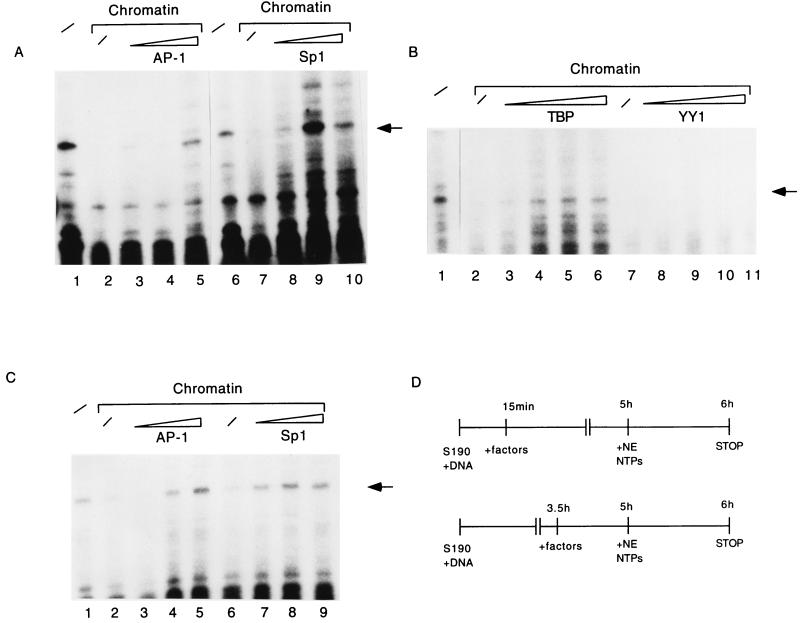FIG. 5.
Relief of nucleosomal transcriptional repression by trans-acting factors. (A) AP-1 (lanes 3 to 5) and Sp1 (lanes 8 to 10), added 15 min after initiation of chromatin assembly on pHPV-16-Luc, activate in vitro transcription from the E6 promoter. Specific transcripts were detected by primer extension (arrow). The same transcript is generated from free DNA in the absence of chromatin and an excess of any additional factor (lanes 1 and 6) but is repressed by chromatin alone (lanes 2 and 7). (B) Under the same conditions as used for panel A, TBP (lanes 3 to 6) marginally induces a nucleosomally organized E6 LCR, while YY1 (lanes 8 to 11) fails to do so. Lane 1, transcription of nucleosome-free DNA; lanes 2 and 7, repression of transcription by nucleosomes. To detect the weak signals of the transcriptional induction by TBP, this blot was exposed five times longer than the blot shown in panel A. YY1 has a strong binding site within the promoter sequence covered by the nucleosome, which does not lead to transcriptional repression in transfection experiments, while additional YY1 sites remote from the promoter and possibly protected by the upstream nucleosome may negatively interfere with transcription independent from the chromatin state of the HPV-16 LCR (50). (C) AP-1 (lanes 3 to 5) and Sp1 (lanes 7 to 9) can activate in vitro transcription from the E6 promoter even when added at a late stage of chromatin assembly. The conditions of this experiment resembled those for panel A, but the transcription factors were added 3.5 h after initiation of chromatin assembly. Lane 1, transcription from naked DNA, lanes 2 and 6, transcription from chromatin in the absence of additional factors. (D) Schematic diagram of the experiments in panels A and C. NTP, nucleoside triphosphate.

